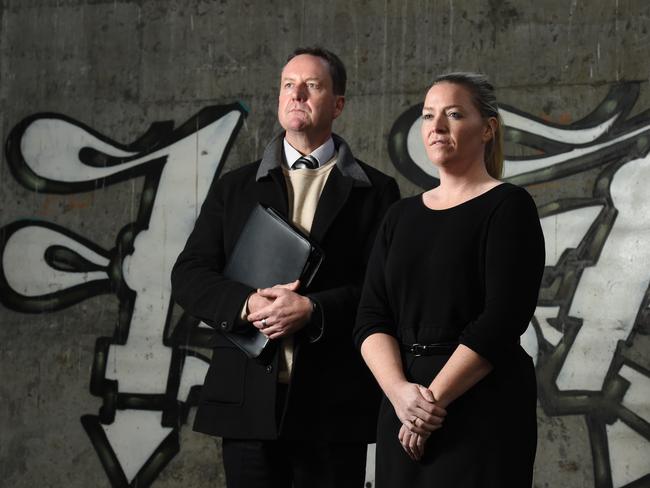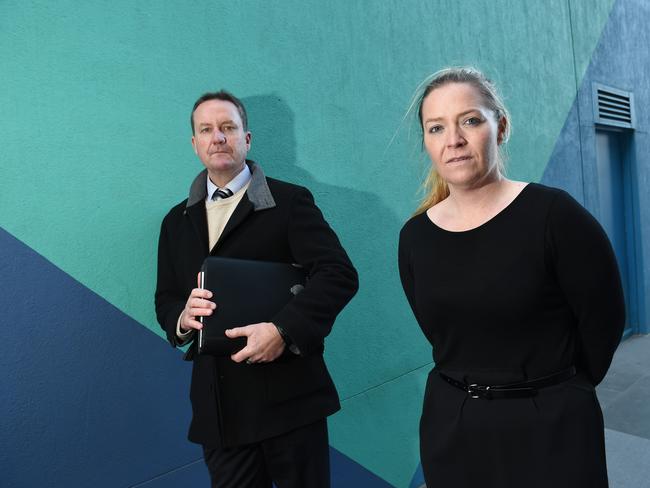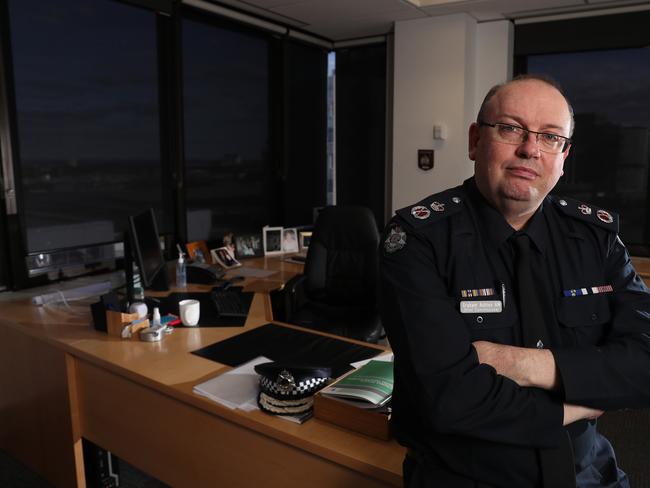Victoria Police shift focus to help teenage runaways from crime, predators
SERIAL runaways from state care are disappearing on average six times a year, with random creeps plying them with “trinkets” for sex or committing crimes.

Law & Order
Don't miss out on the headlines from Law & Order. Followed categories will be added to My News.
- Moomba thug now alleged carjacker
- Syndicates recruit Melbourne teens for violent crime sprees
- Baseball bats in short supply as terrified residents take up arms
- Refugee parents send kids back to Africa to escape crime scourge
- Melbourne teen gang leaves trail of violence and destruction
- Fifteen-year-olds Victoria’s most prolific criminals
- Victoria’s top cop: We all have a role in giving youth hope
SERIAL runaways from state care are disappearing on average six times a year and committing crimes or falling victim to predators, police analysis reveals.
Random creeps are plying the kids with alcohol, cigarettes, mobile phone credit or other “trinkets” for sex, or in return for committing criminal acts, investigators say.
A Victoria Police project centring on about 55 wayward youths aged 10-15 is trying to provoke officers to radically rethink their approach to the young delinquents, and to see them as vulnerable victims.
The project was prompted by a senior officer’s deep dive into the case files of recidivist juveniles in Victoria’s west, which exposed a core group responsible for a lot of crime are also victims of exploitation.
One 15-year-old girl, a sexual assault victim, went missing 12 times over six months for a total of 46 days, and committed offences while missing including assault, shoplifting, theft and criminal damage.
The 55 children at the centre of the study live in out-of-home care, managed either by the Department of Health and Human Services or other welfare providers.

International indicators suggest children who disappear three times a year or more are at high risk of sexual exploitation.
Officers in Victoria Police’s Western Region are receiving training to see the children in a new light and “case manage” their lives to improve outcomes.
Inspector Jamie Templeton said the project was intended to reduce the number of children going missing from out-of-home care, the number of times each child disappears, and the duration they’re gone.
“We need to focus on the vulnerability and victimisation of these kids,” he said.
A senior analyst working on the project, Charlotte Fox, said some police considered runaways “frustrating to manage” but it was important to better understand their absences.
“If we focus intensively on those 55 kids ... hopefully that’s a really big bang for our buck,” she said.
“We’re actually hopefully reducing offences committed while those kids are missing, but also reducing the risk of them being victimised as well.”

The new approach — in conjunction with existing work by teams across the Western Region — appears to be paying off, with a marked drop in the number of children going missing in the Geelong and Ballarat areas in 2015.
For example, a 13-year-old boy who was quite prolific at running away and stealing cars slowed to just one offence and one “missing” period in three months after police used the new approach.
Police are also employing novel disruption tactics such as issuing harbouring notices to adults who allow out-of-home care kids to congregate in their homes.
YOUTH CRIME SUMMIT
EDUCATION and job opportunities for the young and what drives violent behaviour are among issues to be examined at the Victoria Police Chief Commissioner’s Youth Summit on Thursday.
Top cop Graham Ashton will address around 200 leaders from government departments, agencies and community organisations to kick off the event, supported by the Herald Sun.

Criminology expert Prof Mark Halsey, from Flinders University, and Salvation Army youth services manager Hayley Troemml-Wilson will also address the gathering tackling young people’s involvement in serious and violent crime.
The discussion will include education and employment, personal safety and victimisation, vulnerability to violent behaviour, mental health and substance misuse.
Mr Ashton said a broader understanding of what was driving youth crime was needed if recidivism was to be addressed.
“This summit for me is an opportunity to learn about the factors — but also importantly what do we have to do, and who’s got to do what to address the issues,’’ he said.
An understanding of the role of parents was also important, he said.
AFL Victoria, the Australian Drug Foundation, Berry Street, Crime Statistics Agency, Education Department, Justice Department, Department of Premier and Cabinet, Federation of Community Legal Centres, Islamic Council of Victoria, Law Institute Victoria Parliament of Victoria, Police Association of Victoria, Victoria Legal Aid and Youth Affairs Council are among organisations attending.
MORE:
MOOMBA THUG NOW ALLEGED CARJACKER
SYNDICATES RECRUIT MELBOURNE TEENS FOR VIOLENT CRIME SPREES
BASEBALL BATS IN SHORT SUPPLY AS TERRIFIED RESIDENTS TAKE UP ARMS
REFUGEE PARENTS SEND CHILDREN AWAY FROM MELBOURNE CRIME SCOURGE
VIOLENT TEEN GANG LEAVES TRAIL OF DESTRUCTION
FIFTEEN-YEAR-OLDS VICTORIA’S MOST PROLIFIC YOUNG CRIMINALS
CRIME THE LATEST GAME IN TOWN FOR TEENS
VICTORIA’S TOP COP: WE ALL HAVE A ROLE IN GIVING YOUTH HOPE
HERALD SUN RIDES ALONG WITH POLICE: CHAOS REIGNS ON MELBOURNE’S STREETS
